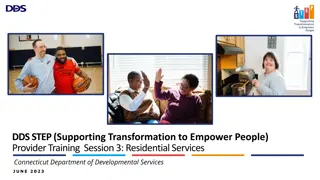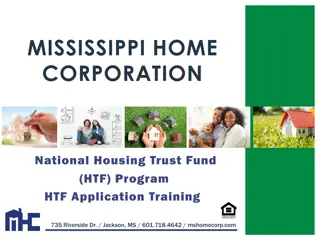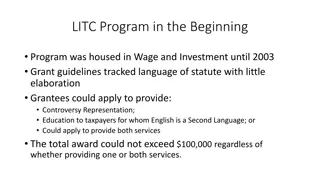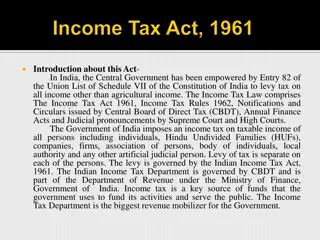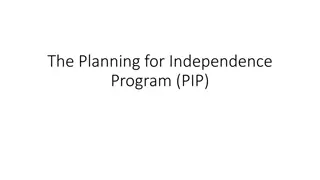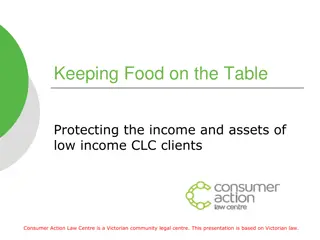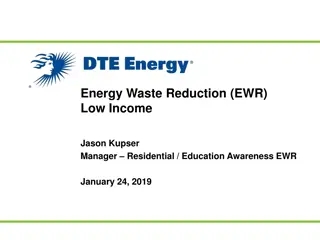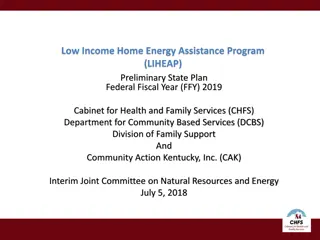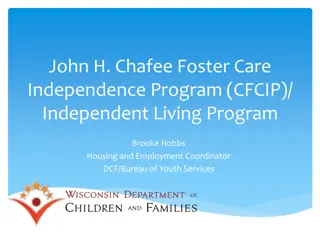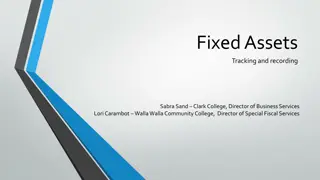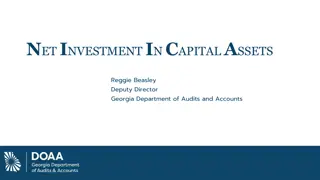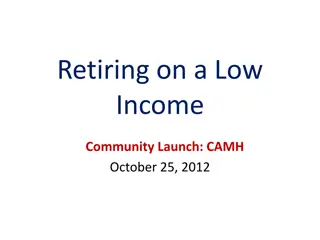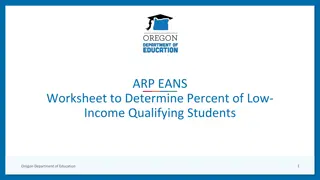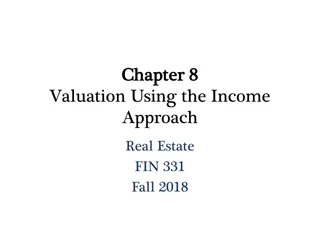Assets for Independence (AFI) Program Overview: Empowering Low-Income Individuals and Families
The Assets for Independence (AFI) Program, administered by the Office of Community Services under the U.S. Department of Health and Human Services, aims to increase economic self-sufficiency among low-income individuals and families through asset building. AFI provides grants to eligible entities such as non-profits, government agencies, and financial institutions, allowing them to offer Individual Development Accounts (IDAs) and related services. These IDAs are matched savings accounts that can be utilized for purchasing a first home, starting a business, or funding post-secondary education, ultimately promoting wealth-building and economic stability.
Download Presentation

Please find below an Image/Link to download the presentation.
The content on the website is provided AS IS for your information and personal use only. It may not be sold, licensed, or shared on other websites without obtaining consent from the author.If you encounter any issues during the download, it is possible that the publisher has removed the file from their server.
You are allowed to download the files provided on this website for personal or commercial use, subject to the condition that they are used lawfully. All files are the property of their respective owners.
The content on the website is provided AS IS for your information and personal use only. It may not be sold, licensed, or shared on other websites without obtaining consent from the author.
E N D
Presentation Transcript
Assets for Independence (AFI) Program Overview Office of Community Services Administration for Children and Families U.S. Department of Health and Human Services
Administration for Children and Families (ACF) Part of the US Department of Health & Human Services. One of the key human services agencies within HHS. Promotes the economic and social well-being of families, children, individuals and communities. Responsible for funding many programs and services, including Head Start, child care, child welfare, child support, LIHEAP, family violence prevention, TANF, CSBG, and refugee services.
Assets for Independence (AFI) Program Purpose: Demonstrate and support an assets-based approach for increasing the economic self-sufficiency of low-income individuals and families. What is asset building? Supporting the acquisition of assets (both tangible, such as a home, and intangible, such as education) that can increase opportunities, build wealth, and increase economic stability. Income-support strategies, such as cash assistance and SNAP (food stamps), act as a safety net. Asset-building strategies act as a ladder.
AFI Award Information AFI is a discretionary grant program. Competitively awarded; typically more than one competition per fiscal year. Program is implemented by grantees. Organizations can have more than one AFI grant at a time. General grant information: Maximum award: $1,000,000 Minimum award: $10,000 Grants have a 5 year period.
Fiscal Year 2014 Information In FY 2014, AFI was appropriated $19.026 million. Approximately $10 million was awarded as grants. Total of 44 grant awards were made.
Which entities are eligible for AFI grants? AFI is authorized to award grants to the following entities: Non-profit entities with 501(c)(3) status. State or local government agencies or tribal governments applying jointly with a non-profit with 501(c)(3) status. Federally certified Low-Income Credit Unions and Community Development Financial Institutions.
Assets for Independence (AFI) Program Grantees provide Individual Development Accounts (IDAs) and related services to low-income people. IDAs are special use, matched savings accounts. AFI IDAs may be used for: To purchase a first home, To capitalize a business, or To fund post-secondary education or training.
Key AFI Program Requirements Grantees are required to provide 100% non-federal cash match for their AFI grant. Application must document committed funds. Grantees must expend at least 85% of project funds (both the federal AFI grant and non-federal funds) to match participant IDA savings. Grantees must match participant IDA savings at a rate within the allowable range. All asset purchases must be made in accordance with the specific requirements for each qualified expense.
Participant Eligibility 1. Any individual who is a member of a household that is eligible for assistance under their state s Temporary Assistance for Needy Families (TANF) program. OR
Participant Eligibility, cont. 2. Any individual who is a member of a household that meets both of the following requirements: Income Test - Adjusted gross income of the household is equal to or less than 200 percent of the federal poverty guidelines or the earned income tax credit limits. Net Worth Test - Net worth of the household, as of the end of the calendar year preceding the determination of eligibility, does not exceed $10,000 (excluding value of the primary residence and one vehicle).
How AFI Works: A Participants Perspective Kim would like to purchase her first home. An AFI grantee in her community determines that she is eligible and Kim opens her IDA. The AFI grantee matches Kim's savings at a rate of $2 for every $1. There is a local homeownership program through which Kim can purchase her home with $6,000 for down payment and closing costs.
How AFI Works: A Participants Perspective For 3 years, Kim saves $55 per month of her earned income, working towards a goal of $2000 in her IDA. During this time, she receives tax assistance, financial education, and homeownership preparation from the AFI grantee and its partners. Kim saves $2,000 and purchases her home using her savings plus $4000 from the AFI grantee ($2,000 federal/$2,000 non- federal).
How AFI Works: Kims IDA $2000 Savings Combined $6000 for Home Kim saves $2,000 $4000 Matching $2,000 Federal + $2,000 Non - Federal
AFI Resource Center The access point for AFI program technical assistance, including resources for potential applicants. Website: idaresources.acf.hhs.gov Grantee Locator: http://idaresources.acf.hhs.gov/afigrantees Help Desk: Phone: 1-866-778-6037 Email: info@idaresources.org


